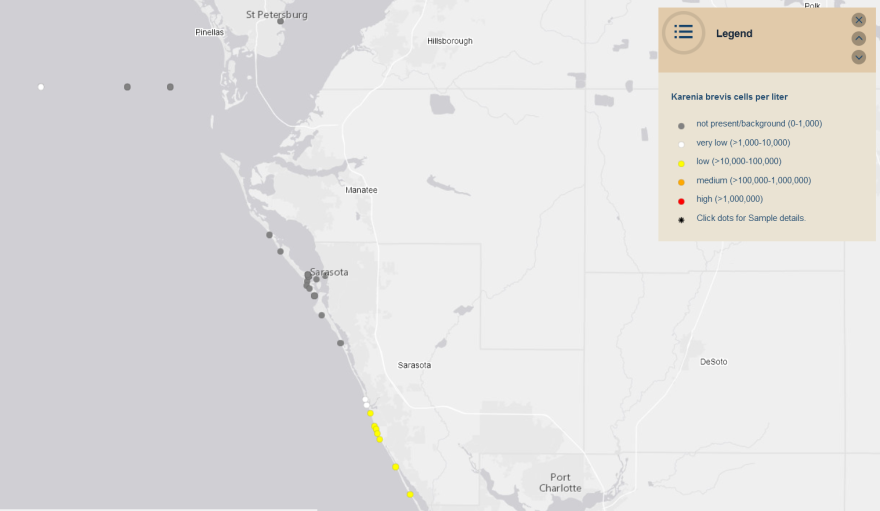Red tide, that scourge of beachgoers and waterfront residents, is back.
Low levels of the toxin karenia brevis have been found off the coasts of Sarasota and Pinellas counties, primarly near Venice and South Venice. It's not known at this time whether the low amounts will eventually result in fish kills and foul-smelling breezes.
Robert Weisberg is an oceanographer at the University of South Florida's College of Marine Science in St. Petersburg. He says 2020 has been a "strange year" for the phenomenon.
"We did not have a normal season bloom," he said, "but those conditions abated some time back and other conditions conducive to a bloom subsequently set in. Whether these will merely result in low level concentrations, or a full-blown bloom cannot be commented on at the present time."
Kate Hubbard is a research scientist for the Florida Fish and Wildlife Conservation Commission, based in St. Petersburg. She says this is late in the year for a bloom - usually they occur in late summer through early fall.
"Looking at the ocean circulation on the coast, the conditions have not really been feasible for bloom development," Hubbard said. "That's partially wind-driven. And so we've seen sort of a change over the past few weeks, and that's been coincident with these increases along our coast."
Even though it occurs naturally, red tide is exacerbated by runoff from urban areas or nutrients from agriculture. And wave action, like during Tropical Storm Eta, can help release those toxins into the air. No dead fish have been reported.
The last big outbreak lasted more than five months from 2017 to 2018, killing untold numbers of fish, as well as dolphins, turtles and manatees.








